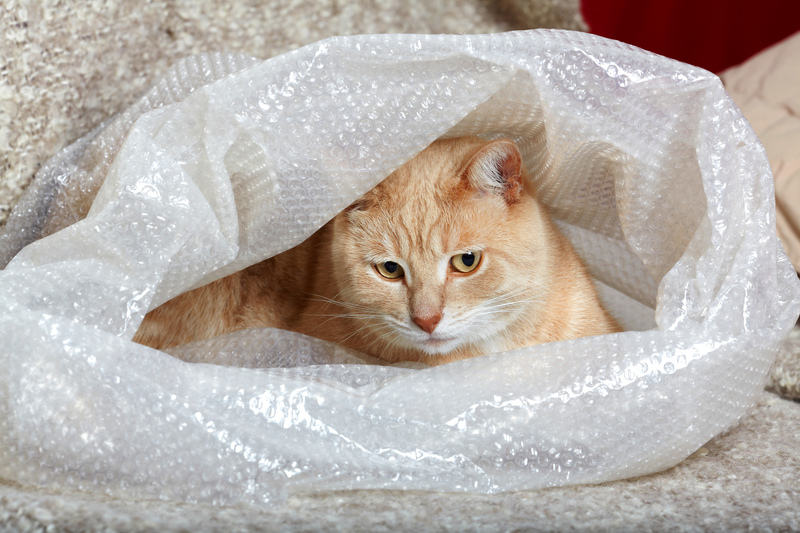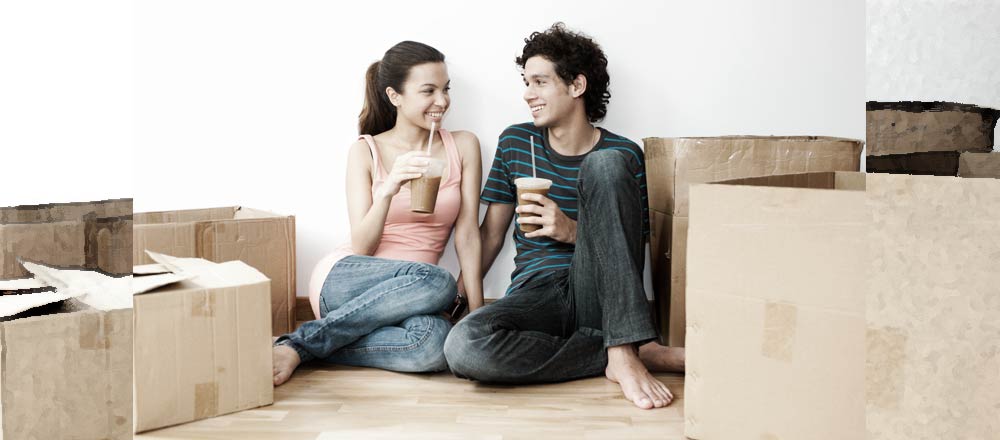Essential Decluttering Checklist for Moving
Posted on 21/05/2025
Essential Decluttering Checklist for Moving
Moving to a new home is both exciting and daunting. One of the most important steps to ensure a smooth transition is proper decluttering before packing. Whether you are downsizing, relocating across the country, or just moving to a nearby neighborhood, an essential decluttering checklist for moving can save you time, money, and stress. This comprehensive guide provides actionable steps to help you organize, sort, and streamline your possessions, making your move as efficient as possible.
Why Decluttering Before Moving Is Crucial
Decluttering before a move isn't just about tidying up; it's about creating a fresh start. Here are some compelling reasons why you should prioritize decluttering before your move:
- Reduces Moving Costs: The fewer items you have, the less you'll spend on packing materials and transportation.
- Saves Time: Sorting through your belongings before moving day eliminates the need to unpack unnecessary items later.
- Organizes Your Space: *Moving is an ideal opportunity to adopt a clutter-free lifestyle from the start.*
- Simplifies Packing and Unpacking: Boxes are easier to categorize, label, and unpack when they contain only essentials.
- Minimizes Stress: Knowing you're only taking what you need offers peace of mind.
To achieve these benefits, follow our detailed step-by-step moving decluttering checklist below.

Ultimate Pre-Move Decluttering Checklist
Before tackling each room, gather some supplies:
- Sturdy boxes
- Trash bags
- Permanent markers for labeling
- Sticky notes
- Notepad for inventory
Step 1: Create a Decluttering Plan
Before you dive in, spend some time planning your decluttering process:
- Establish a timeline: Identify key dates for sorting rooms, arranging pick-up for donations, and discarding trash.
- Designate zones for items to keep, donate, sell, recycle, or toss.
- Make a checklist of all areas and rooms in your current home.
- Set daily or weekly goals to stay on track.
Step 2: Tackle One Room at a Time
Focus on one area to avoid feeling overwhelmed. The following decluttering moving checklist will help ensure you don't miss anything.
Room-by-Room Decluttering Checklist
1. Living Room
- Books and magazines: Donate or recycle titles you no longer read.
- Decorative items: Keep only what matches your new style or fits your new space.
- Electronics: Recycle outdated gadgets, donate working devices you no longer need.
- Old DVDs, CDs, or games: Simplify your media collection.
- Blankets and throws: Eliminate duplicates or worn-out items.
- Furniture: Assess each piece's fit in your new home and condition.
2. Kitchen
- Small appliances: Donate or sell rarely used gadgets.
- Utensils and cookware: Streamline by removing duplicates.
- Expired pantry food: Check expiration dates and discard expired goods.
- Plastic containers: Toss stained, lidless, or warped items.
- Cookbooks: Keep favorites and donate the rest.
- Old or chipped dishes: Recycle or discard breakables you don't use or need.
3. Bedrooms
- Clothing: Sort by season and donate or sell what you haven't worn in a year.
- Bedding: Only pack sets in good condition that you regularly use.
- Shoes and accessories: Downsize ruthlessly.
- Jewelry: Organize, donating or selling unused items.
- Kids' toys and games: Discard broken toys, donate gently used items.
- Furniture: If upgrading, sell or donate bed frames and dressers you won't keep.
4. Bathrooms
- Expired medications: Safely dispose of any out-of-date medicine.
- Old makeup and toiletries: Dump products past their prime or mostly unused.
- Towels: Keep only those in good condition. Donate or use old towels as cleaning rags.
- Hair tools: Downsize if you have multiples.
- Cleaning supplies: Discard near-empty bottles and keep only essentials.
5. Closets & Storage Areas
- Seasonal decor: Purge anything you didn't use last year.
- Suitcases and bags: Recycle or donate those in poor shape or unused.
- Old paperwork: Shred sensitive documents; recycle the rest.
- Linens: Only keep what you need for beds and guests.
- Gift wrap and memorabilia: Let go of what's unnecessary or severely worn.
6. Garage, Basement, & Attic
- Tools: Sell or donate duplicates and broken items.
- Paint, chemicals, or hazardous waste: Properly dispose of according to local regulations.
- Outdoor gear: Sell or give away unused sports equipment or bicycles.
- Holiday decorations: Keep only those you'll truly use in your new space.
- Random "just in case" items: Get honest about what you realistically need in your next home.
Declutter Like a Pro: Questions to Guide Your Decisions
As you review each item, ask yourself:
- Have I used this within the last year?
- Do I have more than one?
- Is it in good condition or worth moving?
- Does it fit my new space or lifestyle?
- Is it worth the cost to move?
If you answered "no" to any of these, seriously consider letting the item go. Remember, decluttering for a move is about efficiency and creating a comfortable new environment.
Packing Tips After Decluttering
Now that you've minimized what you'll bring, packing will be significantly easier:
- Use labeled boxes for "Keep," "Donate," "Sell," "Trash," and "Recycle."
- Pack similar items together to make unpacking a breeze.
- Label each box with the room and description (e.g., "Kitchen - Pots and Pans").
- Protect fragile items with towels, linens, or bubble wrap.
- Keep an inventory list of valuables for insurance and tracking purposes.
How to Dispose, Donate, or Sell Unwanted Items
- Donating: Clothes, furniture, and usable items can be donated to local charities, shelters, or thrift stores.
- Selling: Use online marketplaces like Facebook Marketplace, Craigslist, or neighborhood apps to sell valuables.
- Recycling: Old electronics, cardboard, and some plastics can be recycled at community facilities.
- Special disposal: Chemicals, paint, and batteries require special handling - consult your city's waste management guidelines.
Try to schedule donation pickups or garage sales at least two weeks before moving day so you're not rushed at the last minute.
Advanced Tips for Decluttering Before Moving
- Start early: Begin decluttering at least one month ahead of your move--more for large homes or long-distance moves.
- Be honest: If something is broken, outdated, or holds no sentimental value, it's time to let go.
- Digitize when possible: Scan important photos and documents to save space.
- Involve the whole family: Assign tasks and areas to each person for faster progress.
- Set a timer: Working in focused, timed intervals (like 30 minutes at a time) can help prevent burnout.
Benefits of Using a Moving Decluttering Checklist
An organized checklist keeps you accountable and ensures every room receives attention. The top benefits include:
- Ensures nothing important is forgotten.
- Simplifies each stage and reduces last-minute panic.
- Helps identify donation, sale, and disposal opportunities.
- Makes unpacking in your new home pleasant and stress-free.

Printable Moving Decluttering Checklist Template
Here's a basic template you can print or adapt:
- Entryway: Shoes, coats, mail clutter
- Living Room: Books, decor, furniture, electronics
- Kitchen: Utensils, appliances, pantry, containers
- Dining Room: Tableware, linens, furniture
- Bedrooms: Clothing, shoes, accessories, bedding
- Bathrooms: Toiletries, cleaning products, towels
- Closets: Storage items, seasonal decor, paperwork
- Garage/Basement/Attic: Tools, outdoor gear, storage boxes
- General: Trash, recycling, donation, sales planning
Conclusion: Start Your Move Clutter-Free
A successful move starts with decluttering your home using a comprehensive checklist. By strategically sorting your possessions, you'll streamline your packing, simplify your relocation, and arrive at your new space feeling organized and refreshed. Use this essential decluttering checklist for moving as your guide and enjoy a simpler, smarter move!
_Remember: Decluttering is a process. Take it one step at a time, and you'll reap the rewards of a lighter, easier move!_







